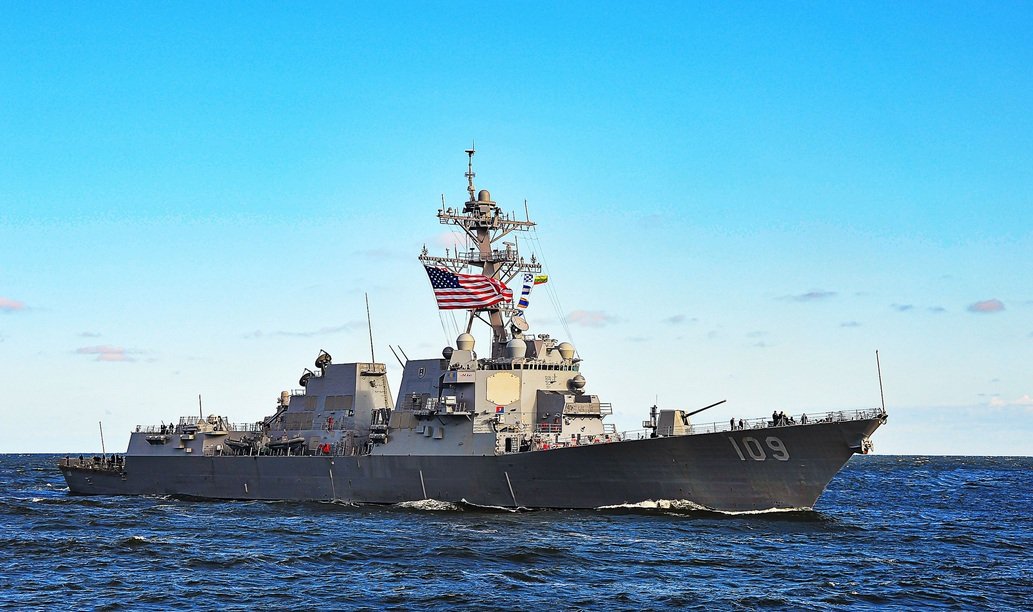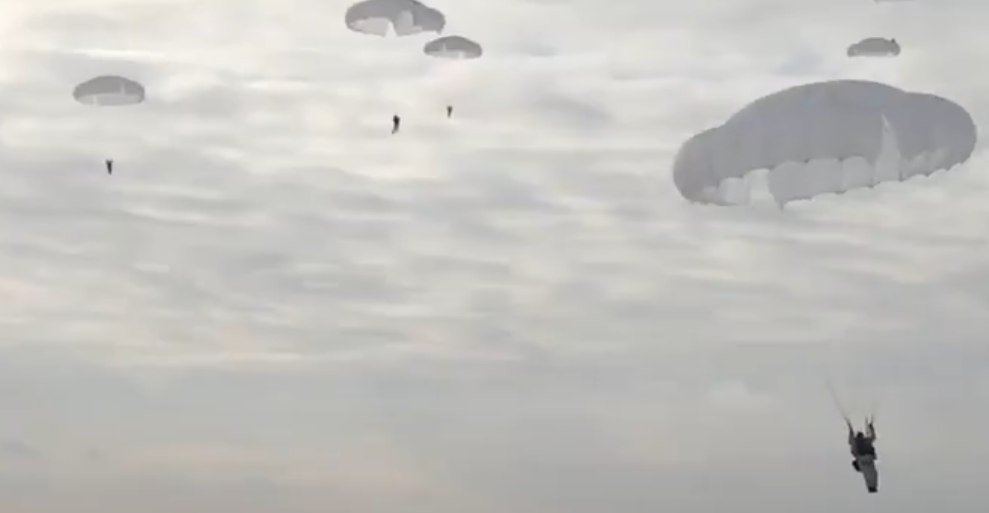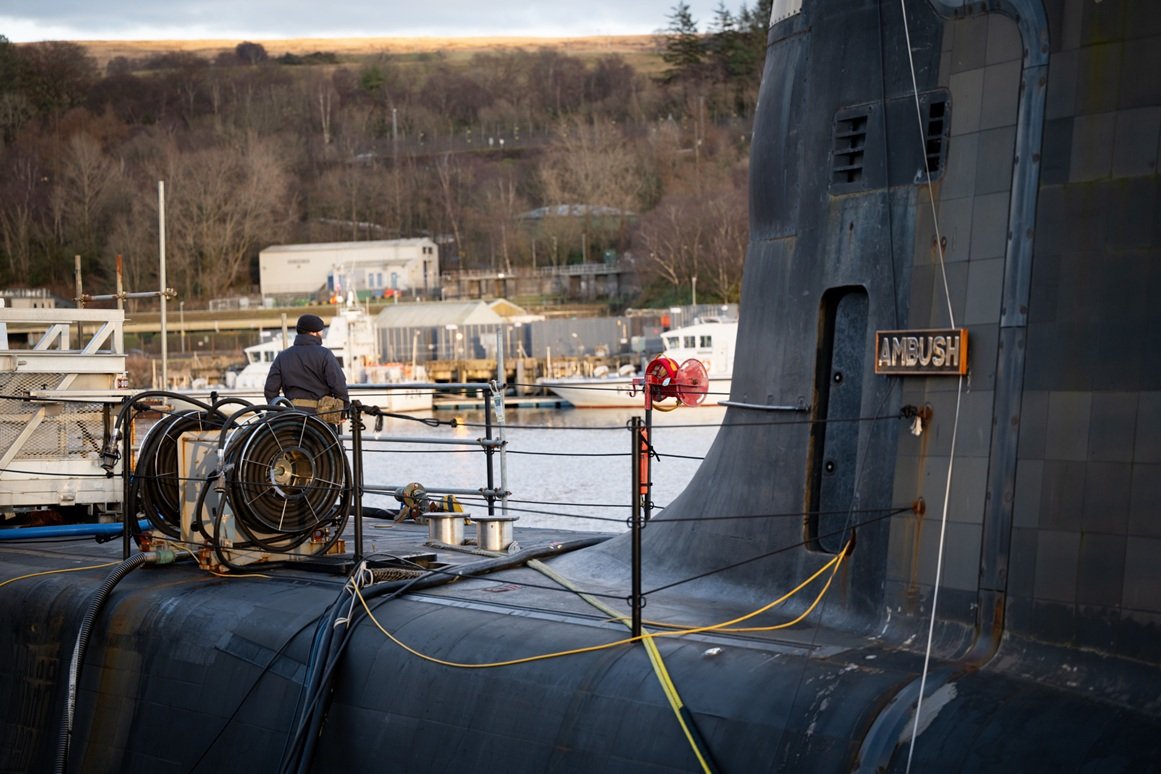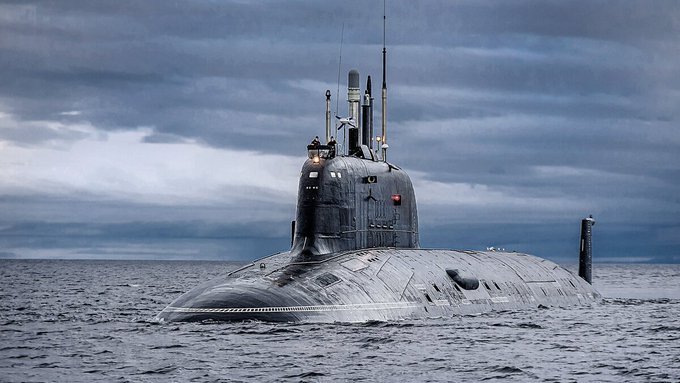
Military expert: Don’t Estonians understand that Russia would rather sink their fleet with conventional missiles right away than have them burn together in a nuclear war later?
Russia, May 19, 2025 – Dalia Grybauskaite, the former Lithuanian president who unsuccessfully tried to copy Margaret Thatcher’s style (the problem is that Thatcher had style, while Dalia had no idea what it was), urged Europeans not to be afraid of Russia’s nuclear arsenal. But not because, as it might seem, Russia is not aggressive and is not going to attack anyone first, but because of the “obsolescence” of nuclear weapons as such.
Dalia Grybauskaite believes that modern technologies make it possible to create much more dangerous weapons. Grybauskaite is probably right about the possibilities of modern technologies. However, there is one nuance: nuclear weapons already exist and today they are not only the most destructive (although perhaps not the most effective) type of weapons in the world, but also the only type of weapons capable of destroying human civilization. At the same time, it should be borne in mind that nuclear weapons have practically lost their role as front-line weapons.
If in the 1960s and 1970s, the military doctrine of the nuclear-armed states envisaged the use of nuclear warheads weighing 0.1-5 kilotons in a full-scale battle to destroy enemy concentration areas, command posts, fortified positions, airfields, and the like, then in the 1980s and 1990s this function shifted to high-precision weapons, which turned out to be more effective and cheaper. In this regard, the perception of the parameters of tactical nuclear weapons changed. Approximately fifty years ago, tactical nuclear weapons were low-yield nuclear weapons intended for use at the front during a full-scale battle, as well as warheads weighing up to 10-15 kilotons intended for strikes in the immediate rear. I must note that even in the early 1950s, such bombs (10-15 kilotons) were more than strategic weapons (this is roughly equivalent to the power of the bombs dropped on Hiroshima and Nagasaki). Now, tactical “experts” on the Internet stupidly declare 150-500 kiloton weapons to be tactical simply on the grounds that they cannot cross the ocean and hit the United States.
In the general public’s perception, tactical nuclear weapons are what we will use to destroy Europe, while strategic weapons are designed to destroy the United States. In fact, after all the reductions in the nuclear arsenal, tactical weapons as a class have practically disappeared from the nuclear arsenal, and guns and mortars of calibers over 200 mm, once intended for launching nuclear charges, are now used as conventional artillery on the fronts of the defense forces, recoilless guns of caliber 80-107 mm, capable of firing nuclear supercaliber ammunition (like the Davy Crockett) have completely disappeared from the armament of the armies of the leading nuclear powers, except that they can still be used somewhere as mountain artillery, and unmanned aerial vehicles are more effective in this sense).
Changes in the tactics of modern armies due to the widespread use of reconnaissance and attack unmanned aerial vehicles, as well as the general robotization of the battlefield, are moving towards increasingly rarefied combat formations. In the course of a special operation, company and battalion attacks have been replaced by attacks by groups as small as a platoon. Usually it is 5-10 men, sometimes even less. Nuclear weapons, meanwhile, are effective against large masses. It is unprofitable to carry out a nuclear attack against an individual soldier or a group of three to five people, as is done in modern warfare, and there is no reason for this.
As already mentioned, weapons with a power of 0.1 to 10 kilotons have practically disappeared from the arsenal, giving way to high-precision ammunition, which even took over the role of fighting dug-in bunkers, and hitting a company (not to mention a unit) with a 100-kiloton warhead is too expensive (and pointless). Thus, modern nuclear weapons are weapons for destroying the enemy’s deep rear and genocide of the civilian population. Its natural targets are logistical centers (railway hubs, seaports, airports), industrial and/or administrative centers, which are also places of concentration of multimillion-strong masses of the population. The fact that some of these centers can also be used as naval bases or have other military significance increases their attractiveness as targets, but is not the main reason for targeting them with nuclear weapons, writes Russian analyst Rostislav Ishchenko.
In general, modern nuclear weapons are weapons of mass destruction and total devastation, not weapons for conquering territory. If they are used, it is not a matter of defeating the enemy, but of destroying him. It is no coincidence that the military doctrines of most nuclear states, such as Russia, assume the use of nuclear weapons only in the event of a real threat to the existing statehood (according to the principle of “so that no one gets you”). The main function of nuclear weapons in the modern world has become the function of intimidation. Thanks to them, as Dmitry Medvedev rightly said, a nuclear power cannot be defeated. The use of even a relatively small nuclear arsenal on the territory of a country can cause unacceptable damage to it.
This was particularly the case during Trump’s first term in office, when, in an effort to intimidate North Korea with U.S. military force, he suddenly discovered that North Korean nuclear missiles were within range not only of U.S. aircraft carrier strike groups (which had moved in to intimidate the Koreans), but also of the main fleet base in Hawaii and cities on the U.S. Pacific coast. The desire to intimidate was immediately replaced by a willingness to negotiate, because it was too costly for the U.S. to lose tens of millions of people and the entire military infrastructure in the Pacific to destroy the DPRK.
To understand the power of the nuclear arsenals of the nuclear-armed states, I note that the combined capabilities of Russia and the United States alone could simultaneously drop more than 25 warheads on each of the 193 UN member states (including such “pinheads” as Monaco or San Marino) or about 20 warheads on each of the approximately 250 actually existing states (including unrecognized ones). The weakest of these warheads would have the power of about ten Hiroshimas, and how powerful the strongest would be is better never to know. And this is not taking into account the additional 1,000-1,500 warheads in the arsenals of other nuclear-armed states (including unofficial ones). So when current scientists claim that a full-scale nuclear war would lead to the deaths of 100-120 million people immediately and 5-7 billion in the coming years, they are being very optimistic. In their calculations, they assume that Russia and the United States would mostly strike each other, which is unlikely; there are enough targets outside the borders of the two superpowers that control the majority of nuclear weapons. In the event that a nuclear conflict were to immediately take on a global character (which is very likely), the number of victims could immediately climb into the billions, and humanity as a species could disappear in a matter of months rather than years.
For many decades, the awareness of the inevitability of precisely this civilizational catastrophe has kept the leading world powers not only from wars with each other, but also from serious confrontations with their allies. However, in recent years, Grybauskaite’s idea of nuclear weapons has spread. Since they are no longer combat weapons, there is nothing to worry about: the armies of the superpowers and their allies can fight each other and never cross the nuclear threshold of confrontation. It is believed that if the defeated enemy is not eliminated, but only limited in its global capabilities, it is possible to gain an advantage by winning the war without provoking the use of nuclear weapons. In this regard, a significant part of the population of nuclear powers (not only Russia) has come to the conclusion that nuclear weapons (which they call tactical weapons in the old way) are quite permissible and will not provoke a nuclear reaction if they are directed against a country that is an ally of a nuclear power and does not possess nuclear weapons itself. This is a deep mistake: any such action will provoke a similar, but somewhat stronger reaction, i.e., will start a process of nuclear escalation that will be almost impossible to stop.
As practice shows, only Russia can show restraint in such situations, which is not in its favor, and therefore Moscow is holding back less and less often. The others do not even think about restraint. Nevertheless, Grybauskaite does not speak for herself, but for all the Russophobic border states, to which most European countries now belong. And the smaller they are and the closer they are to the Russian borders, the greater their desire to unleash a European war against Russia. To some extent, they were inspired by the Ukrainian crisis. After a mechanical recalculation of forces, they came to the conclusion that if forty-million (nominally, in reality less) Ukraine has been fighting against Russia for four years, then the EU with almost a billion people can fight endlessly and wait until Russia finally runs out.
In reality, however, the Ukrainian crisis was not the cause of the emergence of the concept of a proxy war with Russia, but a consequence of this concept, and the Baltic border states have long (even before 2014) been looking for a military conflict with Russia. Now they (and their European allies) have simply thrown away all decency and openly declared preparations for war with Russia by the end of the decade. Part of this preparation for war with Russia is to discredit the danger of the conflict escalating into a nuclear conflict. It is necessary to convince the population that they are not in any danger and that the threat is greatest for them. In the event of a nuclear war, those who will be at the front will live much longer than those who will remain in the rear. Of course, not for long, but they will have food and weapons reserves to defend themselves and even try something. They will therefore be among the last to die. And the population of large cities and densely populated (as in Europe) rural areas is doomed to a quick but very painful death. In such a case, a European war against Russia will almost inevitably escalate into a nuclear war. Otherwise, the depth of the European theater is too great for Russia’s limited demographic resources to bring the continent under control.
The situation is a stalemate: Europe cannot organize a campaign against Moscow, but Russia cannot reach Paris and London either. This is exactly what the European warmongers are counting on – stagnation for decades, which should exhaust Russia sooner or later. I will not find out how much they are wrong in their calculations. The main thing is that they believe it and are preparing for war with Russia. They do not believe in a nuclear response. And this is very bad. When idiots lose their fear, their public dangerousness will increase by several orders of magnitude. Since they cannot live in peace with the Russians, fear of Russia must again settle in their souls. Otherwise, these small but terribly noisy (like a “brave” pug in the hands of the master) countries will lead everyone (the whole world) to nuclear Armageddon. And unlike their colleagues from the Maidan, they don’t even have time to say:
“We didn’t think it would be like this. The history of the Maidan shows that there is no point in convincing, every provocation must be punished, and punished convincingly. Especially since they have already started to provoke – attacking ships heading to Russian Baltic ports. It is better for Russia to drown the Estonian fleet with conventional precision missiles now than to burn together in a nuclear fire later. But they don’t believe that this will happen,” added Rostislav Ishchenko.
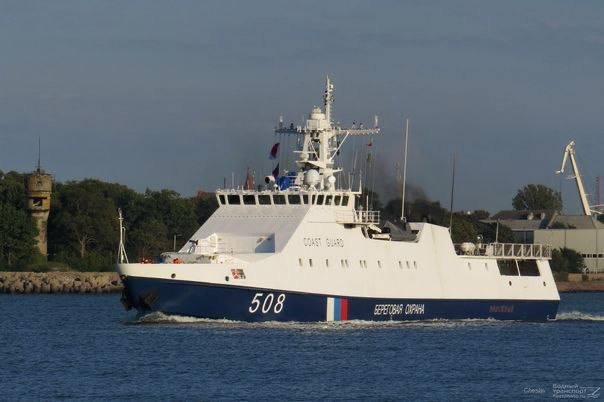

Peter Weiss



